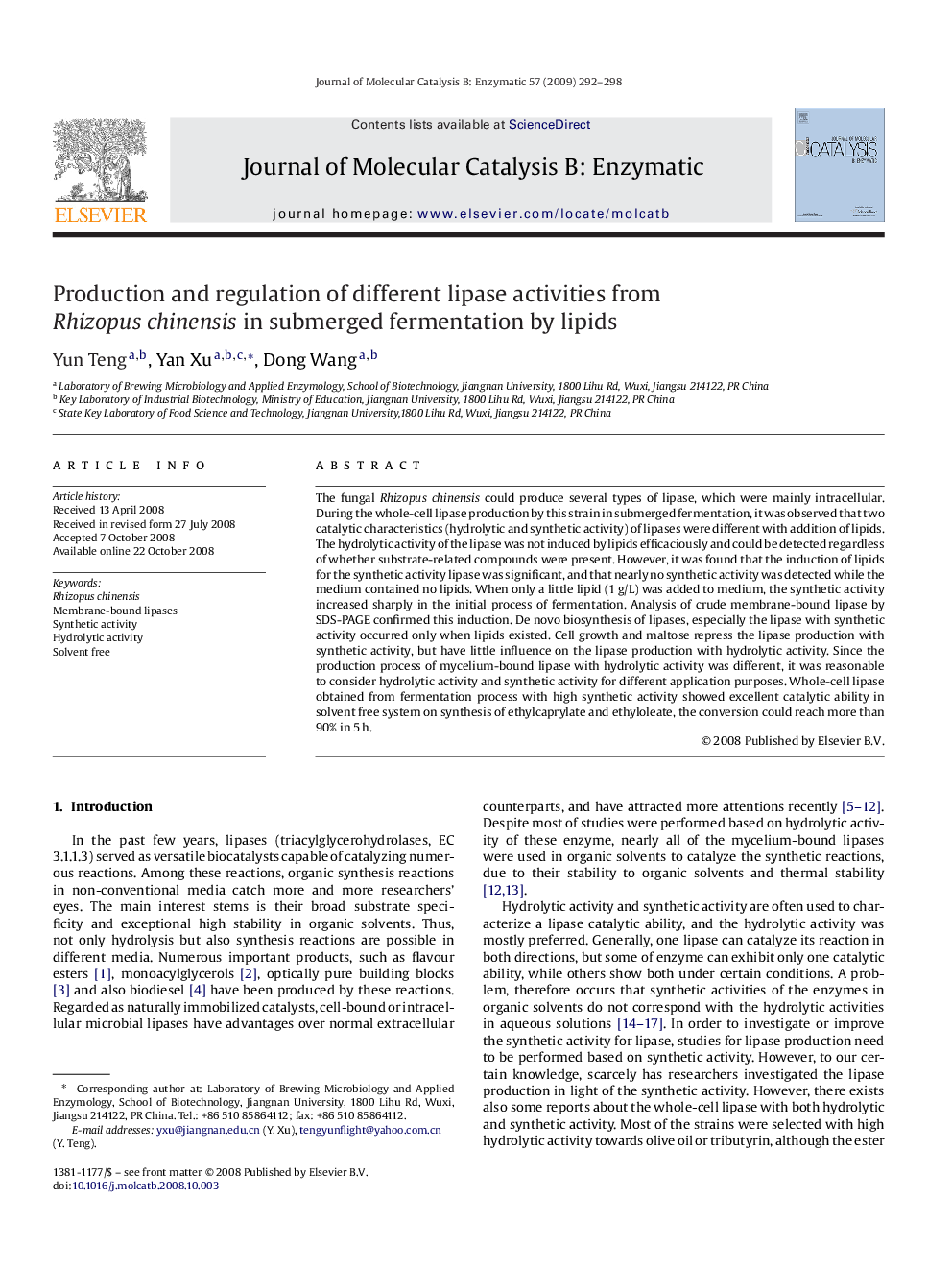| Article ID | Journal | Published Year | Pages | File Type |
|---|---|---|---|---|
| 70611 | Journal of Molecular Catalysis B: Enzymatic | 2009 | 7 Pages |
The fungal Rhizopus chinensis could produce several types of lipase, which were mainly intracellular. During the whole-cell lipase production by this strain in submerged fermentation, it was observed that two catalytic characteristics (hydrolytic and synthetic activity) of lipases were different with addition of lipids. The hydrolytic activity of the lipase was not induced by lipids efficaciously and could be detected regardless of whether substrate-related compounds were present. However, it was found that the induction of lipids for the synthetic activity lipase was significant, and that nearly no synthetic activity was detected while the medium contained no lipids. When only a little lipid (1 g/L) was added to medium, the synthetic activity increased sharply in the initial process of fermentation. Analysis of crude membrane-bound lipase by SDS-PAGE confirmed this induction. De novo biosynthesis of lipases, especially the lipase with synthetic activity occurred only when lipids existed. Cell growth and maltose repress the lipase production with synthetic activity, but have little influence on the lipase production with hydrolytic activity. Since the production process of mycelium-bound lipase with hydrolytic activity was different, it was reasonable to consider hydrolytic activity and synthetic activity for different application purposes. Whole-cell lipase obtained from fermentation process with high synthetic activity showed excellent catalytic ability in solvent free system on synthesis of ethylcaprylate and ethyloleate, the conversion could reach more than 90% in 5 h.
